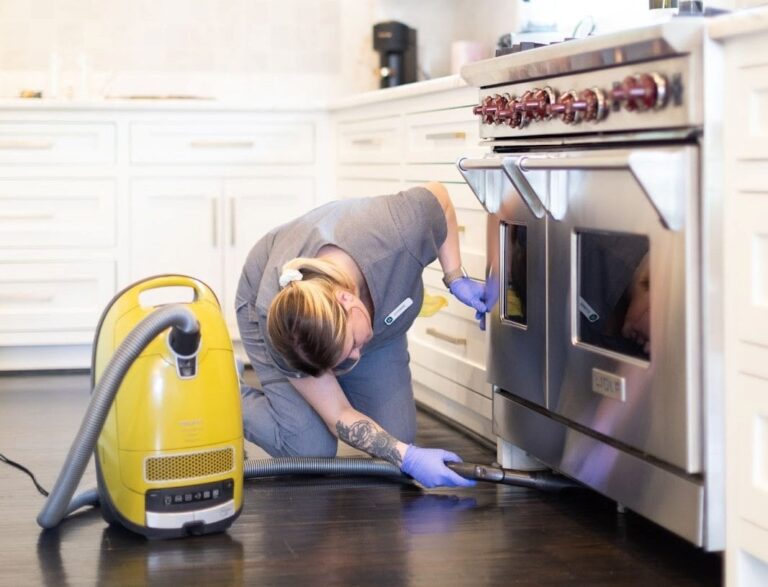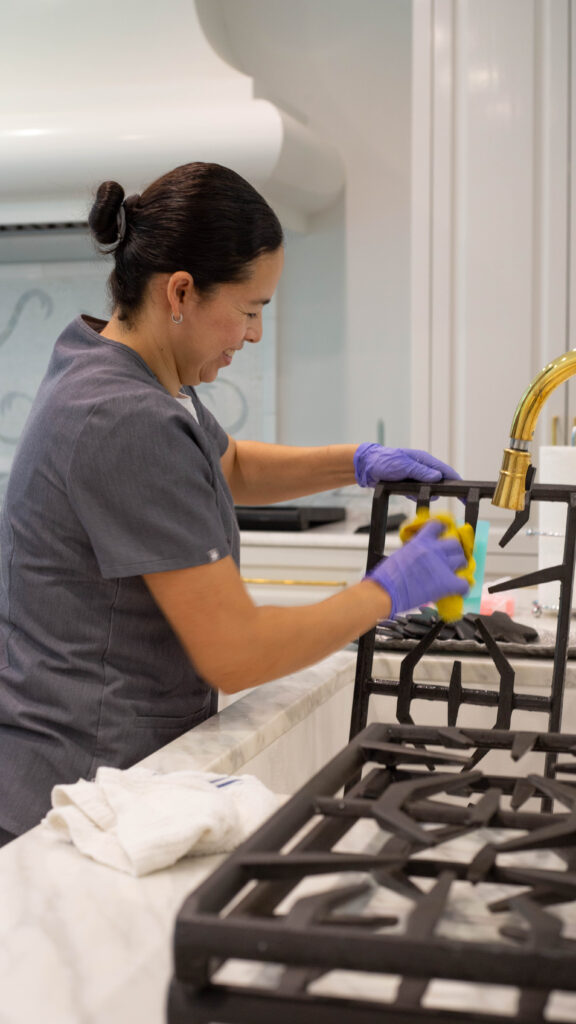How to Remove Rust from Stainless Steel

Despite its name, stainless steel isn’t completely rust-proof. It resists corrosion, but exposure to moisture, salt, and harsh chemicals can break down its protective layer, leading to rust. Left unchecked, rust can ruin the appearance and durability of your appliances, cookware, and fixtures.
But don’t worry—removing rust from stainless steel is easier than you think. Whether you’re dealing with light stains or heavy corrosion, this guide will walk you through the best rust removers, DIY cleaning methods, and essential rust prevention tips. Let’s get started!
Why Does Stainless Steel Rust?
Stainless steel is rust-resistant, not rust-proof. It contains chromium, which forms a protective oxide layer on the surface. When this layer is compromised, rust forms. Here’s what causes it:
- High Humidity & Salt Exposure: Coastal areas or high moisture environments accelerate corrosion.
- Harsh Cleaners: Abrasive or chlorine-based cleaners strip away the protective oxide layer.
- Scratches & Damage: Physical damage exposes the steel to oxygen and moisture, triggering rust.
Understanding these causes is key to preventing rust before it starts.
Preventing Rust: Daily Maintenance & Best Practices
Prevention is always better than removal. Follow these simple steps to keep stainless steel in top condition:
Clean Regularly: Use a soft cloth with mild soap and water. Avoid abrasive pads.
Dry Thoroughly: Water spots can lead to mineral deposits that weaken the protective layer.
Use Gentle Cleaners: Stick to non-toxic cleaners to preserve the finish.
Apply a Protective Coating: In corrosion-prone areas, a sealant can add extra protection.
With these habits, your stainless steel will stay rust-free and look brand new.
DIY Rust Removal: Simple Household Remedies
If the rust has already set in, fear not. Various household remedies can dissolve rust without causing additional harm. Try these easy, effective home remedies:
Baking Soda Paste (For Light Rust)
- Mix baking soda with water to form a thick paste.
- Apply to the rusted area and scrub gently with a soft brush.
- Rinse thoroughly and dry completely.
Vinegar Soak (For Deeper Rust)
- Soak small items in white vinegar for a few hours.
- For larger surfaces, soak a cloth in vinegar and place it on the rust.
- Scrub gently, then rinse and dry.
Lemon & Salt (For Stubborn Spots)
- Sprinkle coarse salt over the rusted area.
- Squeeze fresh lemon juice over it and let it sit for 2 hours.
- Scrub with the lemon rind, rinse, and dry.
Potato & Dish Soap Hack
- Cut a potato in half and dip it in dish soap.
- Rub over the rusted surface—the oxalic acid in the potato helps break down rust.
- Rinse and dry.
These green solutions can help you tackle rust naturally, avoiding harsh chemicals while restoring your stainless steel’s shine.
The Best Rust Removers for Stainless Steel
For stubborn stains, commercial rust removers can work wonders. Here are top-rated options:
Bon Ami
Bon Ami is a non-toxic powder cleaner that has been a household name since 1886. In the case of stainless steel surfaces, it is most efficacious on kitchen sinks. It is praised for its efficacy in making surfaces shine without harsh chemicals.
Oxygen Boost
Oxygen Boost from Branch Basics works well on rust. It contains sodium percarbonate (a bleaching agent), which help with very light surface rust. It can also be used regularly to maintain the shine of stainless steel.
If it is only a case of light rust stains, kitchen remedy techniques such as baking soda or vinegar might do the job. More serious cases of rust require power products like Bon Ami. Choose as per your requirements.

Rust Removal Do’s & Don’ts
- Do: Test all rust-removing solutions on a tiny, hidden area first in order to ensure that it will not ruin the finish.
- Don’t: Use abrasive tools like steel wool, which can scratch and permanently damage stainless steel surfaces.
- Do: While cleaning, follow the grain of stainless steel to maintain its appearance.
- Don’t: Leave any cleaning solution on the surface for longer than recommended, as this will cause discoloration.
The Best Tools for Rust Removal:
- Soft Cloths: For applying cleaners and wiping surfaces without scratching.
- Non-Abrasive Scrubbers: Sponge or brush type for delicate surface applications. We recommend Scrub Daddy for easy cleaning.
- Microfiber Towels: Best for drying and polishing without lint.
Heavy Rust Removal: When DIY Isn’t Enough
If rust is too deep for DIY fixes, try these advanced techniques:
- Rust Converters: These chemicals turn rust into a stable compound that prevents further corrosion.
- Sanding & Polishing: Fine-grit sandpaper can remove deeper rust (use with caution).
- Professional Help: For valuable or heavily rusted items, a specialist can restore them properly.
To prevent rust from returning, apply a stainless-steel sealant and maintain regular cleaning habits. Regular maintenance like wiping down surfaces to remove moisture and avoiding harsh chemicals, will keep your stainless steel shining.
Long-Term Rust Prevention: Keep Stainless Steel Looking New
The appearance of stainless steel can be enhanced with regular maintenance. These preventive measures can make the stainless steel more robust and add to its aesthetic quality.
Apply Protective Coatings: Use polyurethane or epoxy sealants to create a corrosion barrier.
Store Items Properly: Keep stainless steel in dry environments to avoid moisture buildup.
Regular Cleaning Routine: Wipe down surfaces frequently to prevent grime and contaminants from weakening the protective layer.
Manage Environmental Conditions: In humid areas, use dehumidifiers or improve ventilation to minimize moisture exposure.
Our kitchens are filled with stainless steel items. Therefore, you need to deep clean our kitchen every month to keep everything in good shape.
FAQs: Common Rust Removal Questions
Q: Can stainless steel rust indefinitely?
A: Yes, if exposed to corrosive environments like saltwater or harsh chemicals. Regular maintenance prevents deep rust damage.
Q: What’s the fastest way to remove rust?
A: Lemon juice and salt work quickly—apply, let sit, scrub, and rinse.
Q: Is rust on stainless steel a health hazard?
A: It’s mainly cosmetic, but excessive rust in food-related areas can harbor bacteria, making prompt removal essential.
Q: How do I remove rust from cutlery?
A: Make a paste with baking soda and water, scrub gently, rinse, and dry immediately.
Q: Can I use bleach to remove rust?
A: No. Bleach reacts with stainless steel, causing more corrosion and discoloration. Use vinegar or a stainless-steel cleaner instead.

Rust doesn’t have to ruin your stainless steel. With the right cleaning techniques and preventive care, you can keep your appliances and fixtures looking pristine for years. Regular maintenance, gentle cleaning methods, and protective coatings will help ensure long-term durability.
Need a professional deep cleaning? Vella provides expert cleaning solutions in Texas including Plano tailored to your needs. Book your appointment today and keep your stainless steel in top shape!